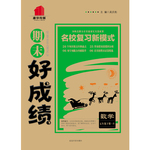题目内容
Jiuzhaigou is a very beautiful place. It is in the Aba Tibetan and Qiang Autonomous Region in Sichuan Province. Jiuzhaigou is a valley. It is more than 40 kilometers long. The green and golden trees, the lofty and multi-shaped mountains and the clear and colorful waters form the unique beauty of Jiuzhaogou. The water of Jiuzhaigou is the soul of the beauty. There are more than 100 lakes of different shapes in the valley. These lakes have wonderful colors. They are called “haizi”, which means son of the sea. It is these beautiful lakes that make Jiuzhaigou a fantastic place. Between the forests and the lakes, there are nine Tibetan villages. The name Jiuzhaigou means Nine Village Valley.
Jiuzhaigou was discovered because of a panda rescue program. The pandas were once endangered because the bamboo there was blooming. When people came to rescue the pandas, they were surprised by the beauty of Jiuzhaigou. After that, Jiuzhaigou became a protected scenic area.
In China, there is a saying which goes like this: No mountain is worth seeing after you have seen Mount Huang and no other body of water will attract you after you have visited Jiuzhaigou. The beauty of Jiuzhaigou cannot be described with mere words. The best way to enjoy this fairyland is to go there. See you in Jiuzhaigou.
What is the best title for the passage? (no more than 3 words)
_____________________________________________________________
How long is the Jiuzhaigou Valley? (no more than 7 words)
_____________________________________________________________
How was the Jiuzhaigou Valley discovered? (no more than 9 words)
What does the name Jiuzhaigou mean? (no more than 7 words)
_____________________________________________________________
【小题1】The Jiuzhaigou Valley.
【小题1】 It is more than 40 kilometers long.
【小题1】Jiuzhaigou was discovered because of a panda rescue program.
【小题1】The name Jiuzhaigou means Nine Village Valley.
解析:
略

 期末好成绩系列答案
期末好成绩系列答案 99加1领先期末特训卷系列答案
99加1领先期末特训卷系列答案 If you’d like to go sightseeing, the following World Heritage Sites may be your best choices.
Jiuzhaigou Valley Scenic and Historic Interest Area
The Jiuzhaigou Valley, which lies in the northern part of Sichuan Province, reaches a height of more than 4,800 meters, with a series of different forest ecosystems(生态系统). There you can enjoy watching excellent waterfalls. Some 140 kinds of birds also live in the valley, as well as a number of endangered plants and animals, including the giant panda. For more information, please visit http://whc.unesco.org/en/list/637.
Khami Ruins National Monument
The city of Khami, which developed after the capital of Great Zimbabwe had been given up in the mid-16th century, is of great archaeological(考古的)interest. The discovery of objects from Europe and China shows that Khami was a major centre for trade over a long period of time. For more information, please visit http://whc.unesco.org/en/list/365.
Henderson Island
Henderson Island, which lies in the eastern South Pacific, is one of the few atolls(环礁)in the world whose ecology(生态)has not been touched by human beings. It is especially famous for the ten plants and four land birds that can only be seen on the island. For more information, please visit http://whc.unesco.org/en/list/487.
The Old City of Jerusalem
As a holy city for three different religions in the Middle East, Jerusalem has always been of great religious importance. It was given a World Heritage Status in 1981 and placed on the “List of World Heritage in Danger” the following year. For more information, please visit http://whc.unesco.org/en/list/148.
【小题1】What can we know about the Jiuzhaigou Valley?
| A.It sits at the foot of a 4,800-meter-high mountain. |
| B.It has different forest ecosystems. |
| C.Most of China’s endangered plants can be found there. |
| D.In all about 140 kinds of birds and animals live there. |
| A.had a very short history |
| B.was ruined in the mid-16th century |
| C.was once Great Zimbabwe’s largest city |
| D.once played a great role as a trade center |
| A.hasn’t been greatly influenced by human activities |
| B.isn’t suitable for humans to live on |
| C.has been open to visitors for years |
| D.is made up of a few large atolls |
| A.http://whc.unesco.org/en/list/148 |
| B.http://whc.unesco.org/en/list/365 |
| C.http://whc.unesco.org/en/list/487 |
| D.http://whc.unesco.org/en/list/637 |